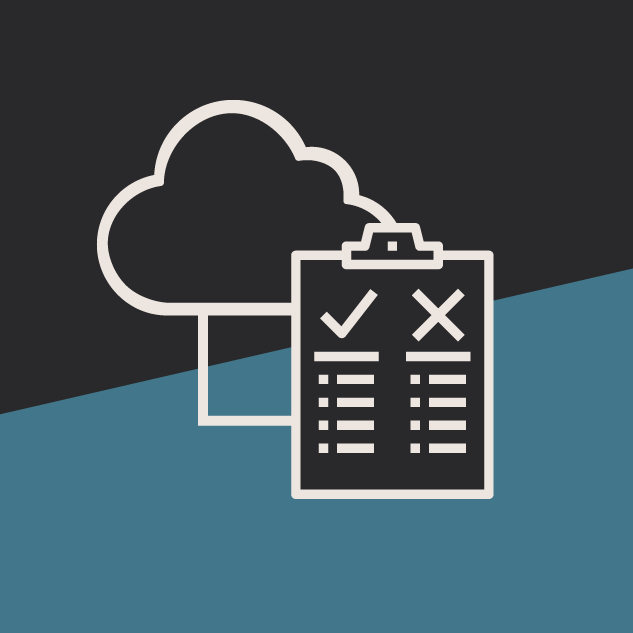Cloud CMS Case Studies: Success Stories and Lessons Learned
Chris Osterhout SVP of Strategy#CMS, #Digital Strategy

Here are the stories of several organizations that migrated to the cloud - the challenges, the successes, and the lessons learned...
The decision to transition digital properties to a cloud-based Content Management System (CMS) often presents a challenge for many organizations. This complexity largely stems from the difficulty in communicating return on investment (ROI) to executive teams, a crucial step in gaining approval for such a significant shift. This article presents real-world scenarios where organizations have successfully made this transition.
These case studies offer insights into the initial hurdles of convincing decision-makers and also shows how a comprehensive view of the total cost of ownership (TCO) (encompassing licensing, hosting, software upgrades, and more) can paint a clearer picture of the long-term financial and operational benefits. Our aim is to provide a roadmap for organizations grappling with this decision, illustrating through practical examples how migrating to a cloud-based CMS can be a financially sound and strategically advantageous move.
Migrating a Nonprofit to a PaaS-based Cloud CMS
A nonprofit organization was running more than 30 websites on a single, large CMS platform, located in a private data center. They needed to quickly share content across all these websites, almost in real-time. However, adding new websites to their system was slow and expensive, often taking months. To keep up with fast-changing market trends, they had to find a way to speed this up significantly. With each of these websites being built on a different code base, managing and updating them was complex and costly.
Internal Challenges
- Security Concerns: The organization's IT staff had initial worries about the security of moving to a cloud-based Platform as a Service (PaaS) CMS.
- Budget Approval: It was expected to be challenging to secure funding for a significant platform migration.
- Knowledge Gap: There was a limited shared understanding within the organization about what a cloud CMS is and its benefits.
Strategy
- Educate Executives: Clearly explain the benefits of cloud CMS, such as automated security updates, infrastructure improvements, and licensing advantages.
- Budget Planning: Present the budget as a one-time capital expense, allowing for depreciation over several years.
- Platform Design: Develop the platform using a single code base and integrate headless content delivery Application Programming Interface (APIs) to distribute content efficiently across all websites.
ROI (Return on Investment)
- Faster Website Launch: The time needed to launch new websites decreased by 78%.
- Security Upgrade Savings: Costs for CMS security upgrades were eliminated, saving 100% annually.
- Overall Cost Reduction: TCO, including hosting, licensing, and security updates, was reduced by 85%.
Migrating a Hospital to a Cloud CMS on Microsoft Azure
A large hospital with a high volume of online traffic aimed to speed up its digital transformation. They wanted a modern cloud platform to provide a more personalized and relevant experience for their patients and families. Given the scale of their digital presence, strict security needs, and the heavy daily web traffic, their infrastructure for just one website involved more than 17 components, like load balancers, firewalls, and servers. The project's main goal was to enhance the customer experience, but the plan for achieving this was much more comprehensive and wide-ranging.
Internal Challenges
- Security: Due to HIPAA rules, the cloud CMS must meet strict standards.
- Complexity: The website has many integrations. Using a CMS platform would require testing from many teams for each of them.
- Budget: Determining a realistic budget for such a large project.
- Time and Resources: With staff busy with patient care, finding time and resources was a challenge.
Strategy
- Platform Analysis: Evaluate various cloud solutions to find one that meets all security and feature requirements and offers flexible deployment options (like PaaS, private cloud, Azure, AWS, etc.). Preference will be given to platforms already compatible with existing Business Associate Agreements (BAAs) the client has in place.
- Financial Awareness: Inform the executive team about the financial aspect of depreciating digital assets.
- Integration Approach: Develop a plan to either avoid the need for certain integrations or ensure that existing integrations can be seamlessly transferred to the new platform without requiring internal modifications, thereby reducing dependency and risk.
ROI (Return on Investment)
- Cost Savings: The TCO, which includes expenses for hosting, licensing, and security updates, was reduced by 86%.
- Improved Website Uptime: The total uptime of the website improved from 99.1% to an impressive 99.9999%.
- Enhanced Scalability: The website can now handle increasing traffic effortlessly, thanks to the integration of Microsoft App Services and a Content Delivery Network (CDN).
- Faster Deployment: By integrating with a Microsoft DevOps CI/CD pipeline, the time required to market has been cut by over 50%.
Migrating a Servicing Company to a SaaS Cloud CMS
A service company needed to quickly adapt to fast-changing economic conditions by offering new products to customers and training their staff on how to implement them. Their website, running on an outdated monolithic CMS platform, was slowing them down. The company aimed to streamline the process of introducing new products and updating their website. It was crucial that managing the CMS platform did not take precedence over meeting customer needs. They required a rapid digital transformation within just a few months.
Internal Challenges
- Budget Constraints: Since this was an unplanned expense, the budget had to be very carefully managed.
- Past Experiences: Previous platform migrations had left a negative impression on many executives, making them hesitant about undergoing another migration.
- Limited Time and Attention: The internal stakeholders were preoccupied with their own product and staffing transformations, leaving them with little time to focus on this project.
Strategy
- Platform Choice: The selected platform needed to be future-proof, ensuring the organization wouldn't face the same issues of being outdated, underperforming, or inflexible in just a few years.
- Implementation Approach: The strategy required minimal time investment from the client while keeping them well-informed and involved throughout the process.
- Project Timeline: The project needed to be completed within a few months.
ROI (Return on Investment)
- Budget and Time Efficiency: The migration to the Software as a Service (SaaS) cloud CMS was achieved with a 66% cost reduction compared to typical CMS platform migrations, and it was completed in just 30% of the usual time.
- Maintenance Cost Reduction: The annual expenses for CMS maintenance were eliminated, resulting in a 100% cost saving.
- Faster Content Updates: The time required to market new product offerings on the website was reduced by 74%.
Lessons Learned
Successful cloud CMS migrations offer invaluable lessons for organizations looking to modernize their digital infrastructure. A key takeaway is the importance of not presuming executive-level understanding of the technical and financial nuances involved in such initiatives. Executives need clear, comprehensible explanations about the budgetary implications and strategic benefits of migrating to a cloud CMS.
Another takeaway is the importance of calculating ROI. Often perceived as a complex task, ROI calculation can be straightforward, focusing on cost savings, efficiency gains, and improved performance. Additionally, integrating the concept of TCO into organizational discussions is vital. Understanding TCO helps stakeholders see the bigger financial picture, encompassing all costs associated with the project, from initial setup to ongoing maintenance. This comprehensive approach is instrumental in executing migration projects successfully and reaping the full benefits of a cloud-based CMS.
Related Articles
Results Matter.
We design creative digital solutions that grow your business, strengthen your brand and engage your audience. Our team blends creativity with insights, analytics and technology to deliver beauty, function, accessibility and most of all, ROI. Do you have a project you want to discuss?
Like what you read?
Subscribe to our blog "Diagram Views" for the latest trends in web design, inbound marketing and mobile strategy.


